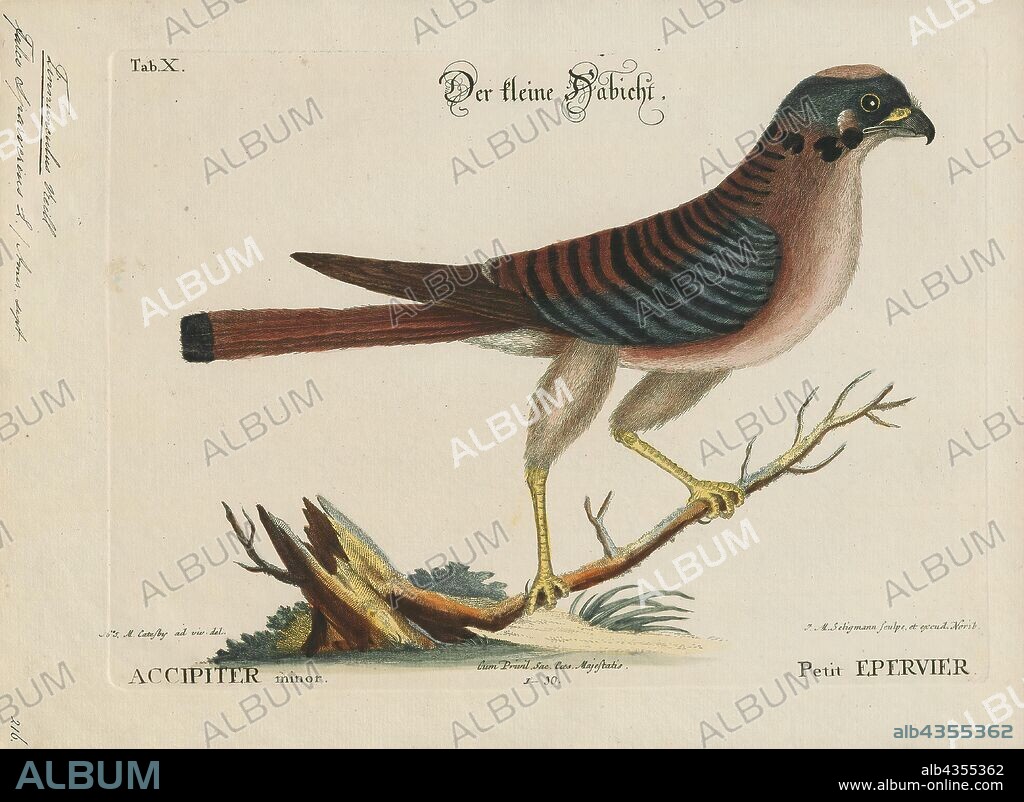alb4355362
Tinnunculus sparverius, Print, The American kestrel (Falco sparverius) is the smallest and most common falcon in North America. It has a roughly two-to-one range in size over subspecies and sex, varying in size from about the weight of a blue jay to a mourning dove. It also ranges to South America, and is a well-established species that has evolved seventeen subspecies adapted to different environments and habitats throughout the Americas. It exhibits sexual dimorphism in size (females being moderately larger) and plumage, although both sexes have a rufous back with noticeable barring. Its plumage is colorful and attractive, and juveniles are similar in plumage to adults., 1700-1880.

|
Add to another lightbox |
|
Add to another lightbox |



Caption:
Tinnunculus sparverius, Print, The American kestrel (Falco sparverius) is the smallest and most common falcon in North America. It has a roughly two-to-one range in size over subspecies and sex, varying in size from about the weight of a blue jay to a mourning dove. It also ranges to South America, and is a well-established species that has evolved seventeen subspecies adapted to different environments and habitats throughout the Americas. It exhibits sexual dimorphism in size (females being moderately larger) and plumage, although both sexes have a rufous back with noticeable barring. Its plumage is colorful and attractive, and juveniles are similar in plumage to adults., 1700-1880
Credit:
Album / quintlox
Releases:
Model: No - Property: No
Rights questions?
Rights questions?
Image size:
4630 x 3385 px | 44.8 MB
Print size:
39.2 x 28.7 cm | 15.4 x 11.3 in (300 dpi)
Keywords:
1700-1880 • ADULT • ADULTS • AMERICA • AMERICAN KESTREL • AMERICAS • ATTRACTIVE • BLUE JAY • COLORFUL • COMMON FALCON • DIFFERENT ENVIRONMENTS • EVOLVED SEVENTEEN SUBSPECIES ADAPTED • EXHIBITS SEXUAL DIMORPHISM • FALCO SPARVERIUS • HABITATS • JUVENILES • MODERATELY LARGER • MOURNING DOVE • NORTH AMERICA • NOTICEABLE BARRING • PLUMAGE • PRINT • RANGES • ROUGHLY TWO-TO-ONE RANGE • RUFOUS BACK • SEX • SEXES • SIZE • SMALLEST • SOUTH AMERICA • SUBSPECIES • SUDAMERICA • TINNUNCULUS SPARVERIUS • VARYING • WEIGHT • WELL-ESTABLISHED SPECIES • WOMAN • WOMEN
 Pinterest
Pinterest Twitter
Twitter Facebook
Facebook Copy link
Copy link Email
Email
